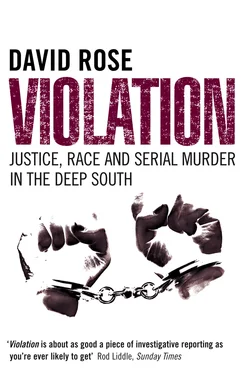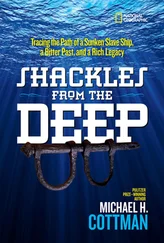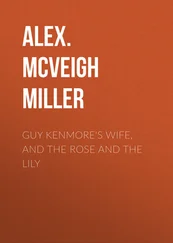1 ...8 9 10 12 13 14 ...25 Another perspective emerges from Portrait in Georgia , a short and terrifying stanza by the black writer of the 1920s, Jean Toomer, in which he casts his erotic attraction for a white woman in the light of its likely consequence should his desire be fulfilled:
Hair – braided chestnut
Coiled like a lyncher’s rope
Eyes – faggots
Lips – old scars, or the first red blisters,
Breath – the last sweet scent of cane,
And her slim body, white as the ash
Of black flesh after flame.
The Southern rape complex could manifest itself with startling power when grounded in baseless fantasy. But even before Ferne Jackson’s murder, in the Columbus of the late 1970s, it was beginning to seem as if its racist account of African-American sexuality was a simple description of fact. On 30 November 1976 Katharina Wright, the nineteen-year-old bride of a military officer, who had lived in Columbus for only a fortnight, was raped, robbed and murdered by a man who entered her house on Broadway by posing as a gas company employee. The killer stole $480 in cash, and was said to have shot her as he left. The following September, just before the first stocking strangling, a mentally retarded black man named Johnny Lee Gates was convicted and sentenced to death for these crimes. (After many legal vicissitudes, his sentence was commuted to life without parole in 2003.)
Katharina Wright was German, and although the case attracted its share of news coverage, its impact was limited. Much more shocking to white Columbus was the killing of Jeannine Galloway on 15 July 1977, two months before the death of Ferne Jackson. In Galloway’s brutal slaying, it seemed that whites’ primordial fears had achieved realisation.
Galloway, aged twenty-three, was a blonde and beautiful virgin who still lived with her parents, and who devoted much of her leisure time to directing the choir at the St Mary’s Road United Methodist Church. A talented musician, she played the piano, organ, clarinet, saxophone and guitar, and was as happy playing jazz as Christian hymns. Her fiancé, Bobby Murray, met her when they were both students at the Columbus College music school. Before enrolling, he’d been on the road with a rock band; after taking advice from one of her friends, he cut his hair and shaved his beard in order to impress Jeannine. On trips with the college jazz big band, other musicians ‘would sneak a beer or smoke marijuana’, Bobby told the Ledger. ‘Partaking of neither, Jeannine would still be in the middle of the action. Somebody would say, “Have a drink. Have fun.” She’d get real quiet and tell them right quick, “I am having fun.” She got high on life.’
For years after her murder, the Columbus newspapers continued to run long feature articles about her, on significant anniversaries of her passing, or when some development occurred in the case of her killer, a young African-American criminal named William Anthony Brooks. In these memorials, her qualities came to be described as belonging more to heaven than earth. ‘She was just an angel, a bright and shining light who was just every father’s dream,’ her church’s Reverend Eric Sizemore told reporters after one legal milestone in 1983.
There is no way to mitigate the horror of her murder. Early in the morning of her death, Jeannine was putting out the garbage, chatting to her mother, who stayed inside the house. She bent down to leave the bin, then straightened and came face to face with William Anthony Brooks, a young African-American. He was holding a loaded pistol, which he used to force her into her own car and drive to an area of marshy wasteland behind a school two miles away.
‘She was continually asking me to let her go – to take her money and the car and let her go,’ Brooks told the police after his arrest, a month later, in Atlanta. Instead, he marched her into a wood: ‘I told her to take her clothes off and she said no, and I yelled at her to take her clothes off.’ After raping her, Brooks’s statement continued, he asked if this had been the first time that she had had sex. ‘She said yes, and I said I didn’t believe it. She started screaming and wouldn’t stop and I pulled out my gun so she’d know I was serious … she kept screaming and the pistol went off. She kept trying to scream but she couldn’t get her voice.’ Jeannine died slowly, bleeding to death from a small-calibre bullet wound in her neck.
Brooks was tried in November 1977, two months after the first stocking strangling. At the start of the case, District Attorney Mullins Whisnant objected to every African-American in the jury pool, in order to ensure that the twelve men and women who would decide Brooks’s fate were white. At the end of the penalty phase he made his closing appeal, imploring the jury to send Brooks to the electric chair: ‘You have looked at William Anthony Brooks all week, he’s been here surrounded by his lawyers, and you’ve seen him.’ Having seen him, of course, the jury knew he was black.
Brooks, Whisnant said, had treated Jeannine ‘worse than you would a stray animal’. Not content with ‘raping her, with satisfying his lust’, he had let her die ‘very slowly, drip by drip, drop by drop … if you sat down and tried to think up a horrible crime, could you think anything more horrible than what you’ve heard here this week, that this defendant committed on this young lady? Could you think of anything more horrible?’
The defendant, Whisnant said, might be only twenty-two, but rehabilitation was quite impossible: he had been in trouble since he was a child. (As a teenager, Brooks had been arrested for car theft.) Fellow prisoners and guards would be at constant risk of a murderous attack if he lived. The defence was asking for mercy because Brooks had been brutally abused as a child, but for Whisnant this was just an excuse: ‘His sisters talked to you about him being beaten by his stepfather, but they never did say what his stepfather was beating him for. Maybe he needed it. There’s nothing wrong in whipping a child. Some of them you have to whip harder than others. And there’s been children who have been abused and beaten, but they don’t turn to a life of crime on account of it.’
He concluded by appealing to the jurors’ social conscience. Columbus was fighting a war, and men like Brooks were the enemy:
And you can do something about it. You can bring back the death penalty and you can tell William Brooks, and you can tell every criminal like him, that if you come to Columbus and Muscogee County, and you commit a crime … you are going to get the electric chair. You can think of it this way. You know from time to time, if you were a surgeon, and you have people coming to you and maybe they have a cancer on their arm, and you look at it, and you say, ‘Well, the only way to save your life is to take your arm off.’ Or maybe he’s got cancer of the eye, and you have to take his eye out. Sure, that’s terrible, but it’s done because you save the rest of the body. And I submit to you that William Brooks is a cancer on the body of society, and if we’re going to save society and save civilisation, then we’ve got to remove them from society.
Amid the sea of white faces inside the courtroom, that last ‘them’ might easily have been interpreted as a reference not to tumours but to African-Americans. In less than hour, the jury voted to put Brooks to death.
Six years later, in 1983, the Federal Court of Appeals for the US Eleventh Circuit stayed Brooks’s execution eighteen hours before his scheduled death, because of its concern about Whisnant’s rhetoric and the exclusion of blacks from the jury. After another six years of bitterly contested hearings, Brooks was sentenced to life without parole. Removed from death row, the man whom Whisnant had deemed beyond rehabilitation took his high school diploma, and then began to study for a university degree.
Читать дальше












